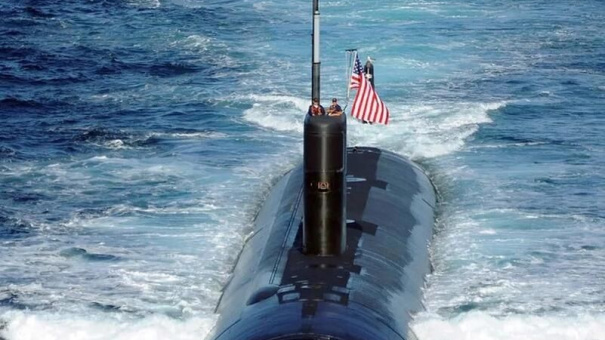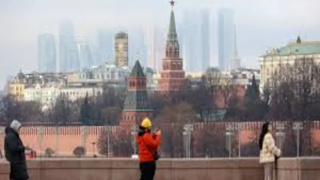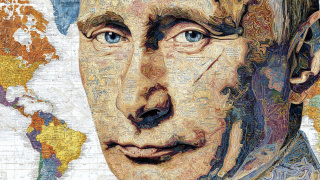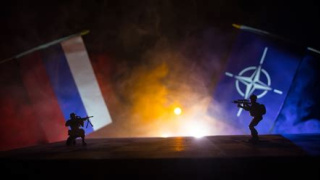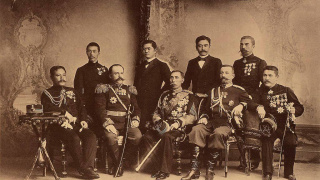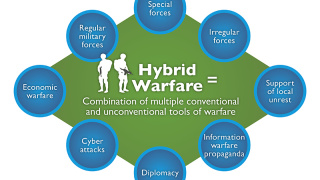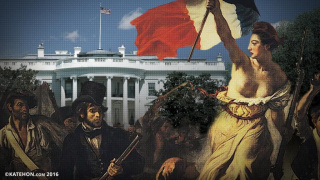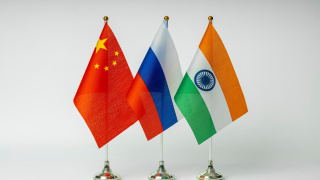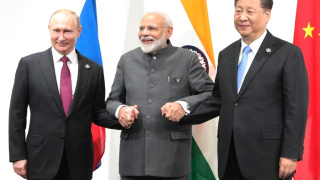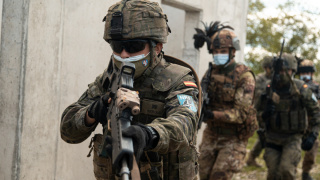Trump’s Evolving Policy Towards Russia
Trump has surprised friends and foes alike in recent weeks after most expected him to make good on his campaign pledge to speedily end US-led NATO’s proxy war on Russia through Ukraine. Instead of coercing Zelensky into Putin’s demanded concessions for peace, however, Trump unveiled a new three-pronged approach to the conflict in mid-July. He’ll send more Patriot systems, sell arms to NATO at full price that they’ll then transfer to Ukraine, and he threatened 100% tariffs on Russia’s trading partners.
The original 50-day deadline that Trump gave Putin for agreeing to a ceasefire was also abruptly shortened to 10 days and will expire on 8 August unless he extends it. This was followed by Trump laundering totally bogus statistics about Russia and Ukraine’s casualty counts since the start of the year, allegedly 112,500 to just 8,000 respectively according to him, and ordering two nuclear submarines near Russia in response to Medvedev’s social media posts warning against him escalating the proxy war.
Although Trump hasn’t (at least not yet) pulled out of talks with Russia as proven by him dispatching his envoy Witkoff to Moscow once again, expectations of a breakthrough have never been lower, especially after Putin reaffirmed during a press event that he remains committed to achieving his maximum goals. Apart from Witkoff’s continued role, everything else more or less resembles the US’ Biden-era policy, including the latest news of a bipartisan bill to give Ukraine $54.6 billion in aid over the next two years.
There are two schools of thought about Trump’s evolving policy towards Russia, the first being that this is a tactic to pressure Putin into concessions and Trump hasn’t yet decided to support Ukraine “for as long as it takes” if he doesn’t succeed, while the second is that this decision has already been made. What they have in common is that Trump is evidently falling under the sway of various warmongers like Lindsey Graham and Zelensky. This is attributable to them manipulating his false expectations of Putin.
Trump repeated on the campaign trail that his friendship with Putin enables him to end the conflict in 24 hours, a promise that he later admitted was hyperbole but which suggested that he placed too much weight in their personal ties and thus assumed that his counterpart was prepared to make concessions. There was never any objective reason to believe this, however, since Putin has always declared that Russia will continue pursuing its maximum goals that he stipulated at the onset of the special operation.
Nevertheless, Trump seemingly though that he could buy Putin off with promises of a resource-centric strategic partnership, which Putin also expressed interest in but in furtherance of convincing Trump to coerce Zelensky into his demanded concessions for peace. For as promising as the scenario of a nascent Russian-US “New Détente” may be, with all that would entail for jointly shaping the emerging Multipolar World Order, neither leader was ultimately comfortable making concessions in Ukraine in exchange.
Unlike Trump, Putin never got his hopes up about such a deal, but Trump took it very personally and began wondering aloud about whether Putin was “just tapping [him] along”. This coincided with Trump patching up his problems with Zelensky, meeting with him at the Vatican during Pope Francis’ funeral, and then their countries agreeing to an amended minerals deal. That selfsame deal, which was reached on the dubious pretext that Ukraine is rich in rare earths, pulled Trump into mission creep.
That was his cardinal sin so to speak since it suggested that he fell for the narrative being pushed by Zelensky and Graham about the supposed trillions of dollars’ worth of rare earths under Ukraine’s soil. Upon doing so, it naturally followed that he’d be more inclined to escalate US involvement in the proxy war if Putin didn’t comply with the concessions demanded of him since there was now allegedly a major profit incentive. Once Trump reached that false conclusion, he was easier to manipulate than ever.
From there, it only took Zelensky, Graham, and others whispering in his ear a little longer about how Putin was supposedly “just tapping [him] along” to get under Trump’s skin and make him think that he’s looking weak on the world stage by restraining his newfound escalation impulses. Some warmonger(s) then presumably passed along those earlier-mentioned totally bogus casualty statistics to him and got him to think that Russia is losing so badly that just a little bit more escalation could bring Putin to heel.
Medvedev’s social media posts served as the publicly plausible pretext for Trump’s symbolic nuclear submarine escalation, which is described as such since these systems are already patrolling the World Ocean and prepared to fire missiles at Russia in the worst-case scenario of World War III. Him ordering two of them near Russia, if they even changed their location afterwards (which nobody can independently verify), therefore doesn’t change anything. All that did was embolden the warmongers.
Having explained the lead-up to Trump’s evolving policy towards Russia, it’s now time to analyze the two schools of thought about whether this is just a tactic to pressure Putin into concessions and he hasn’t yet decided to support Ukraine “for as long as it takes” or if this decision has already been made. Regarding the first, it’s possible that Trump’s new three-pronged approach is the furthest that he’ll escalate, after which he might retain the status quo or even pull back if he doesn’t soon get what he wants.
He's hoping that China and India will at the very least curtail their large-scale imports of discounted Russian oil under the threat of his 100% tariffs, which could then bankrupt the Kremlin and coerce Putin into concessions as Trump sees it, but he’s also recently tempered expectations about this scenario too. That could either signify that he’s preparing an excuse for not escalating any further if this plan fails or is seeking to justify more tangible escalation in that event such as more weapons shipments to Ukraine.
Trump’s calculations will probably be most influenced by the outcome of the US’ trade talks with China. If their earlier self-declared “total reset” leads to a lasting deal, then his envisaged “Pivot (back) to (East) Asia” might become less of a priority, with the purpose shifting from more muscularly containing China to simply “keeping it in check”. The Financial Times’ reports that he blocked Taiwan’s leader from a US stopover and canceled military talks with them suggests that talks with China are going well right now.
That’s not to suggest that China will capitulate to the US’ maximalist demands, just that more far-reaching compromises on its part might be in the cards, which Beijing might agree to in an attempt to at least partially offset Washington’s “Pivot (back) to (East) Asia” by de-escalating tensions through trade. China might in that scenario be buying time to better prepare for what might sooner or later be an inevitable clash with the US or at least a Ukrainian-like regional proxy war. The same goes for the US.
Delaying their showdown through a lasting trade deal could free the US up to escalate against Russia if Trump decides to, or rather, if he’s manipulated further into mission creep. He might be misled into thinking that Russia isn’t just weaker than China, which might have been why the US orchestrated its proxy war with Russia first instead of with China in the false expectation that it’ll quickly be defeated and then quickly become an anti-Chinese vassal, but also “must be punished” for not reaching its own deal.
That would be an epic miscalculation on Trump’s part since the war of attrition has been in Russia’s favor and the only realistic way for the US to stop, let alone eventually reverse, its gradual on-the-ground gains is through risking World War III by provoking another Cuban-like nuclear brinkmanship crisis. This could take the form of either outright threatening that the US will directly attack Russian forces, whether in the battlefield or elsewhere, or approving a conventional NATO military intervention in Ukraine.
Curtailing the military dimension of his “Pivot (back) to (East) Asia” and also restraining himself from escalating against Russia in the event that the US clinches a lasting trade deal with China would be the best-case scenario but the warmongers who now whisper in Trump’s ear might not let him do that. Judging by his evolving policy towards Russia, it appears that the anti-Russian hawks are winning out over the anti-Chinese ones, hence why he might de-escalate with China while escalating against Russia.
Trump is his own man at the end of the day, however, and must take responsibility for his decisions. Being misled by Zelensky, Graham, and others into the mission creep that he approved in mid-July contrary to all his prior disengagement promises was disappointing, and it was even more disappointing when he laundered those totally bogus casualty counts. From Russia’s perspective, the Trump of today doesn’t resemble the Trump of last November, or maybe he just finally took off his mask.
Regardless of why he’s changing his policy towards Russia, the fact of the matter is that any further escalation is doomed to fail, both in coercing Putin into concessions and in reversing his country’s on-the-ground gains. For as obsessed as Trump seems to be with winning the Nobel Peace Prize, he doesn’t realize that the easiest route is to coerce Zelensky into Putin’s demanded concessions for peace, not making a show of ending several Global South conflicts all while risking World War III with Russia.
